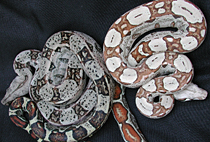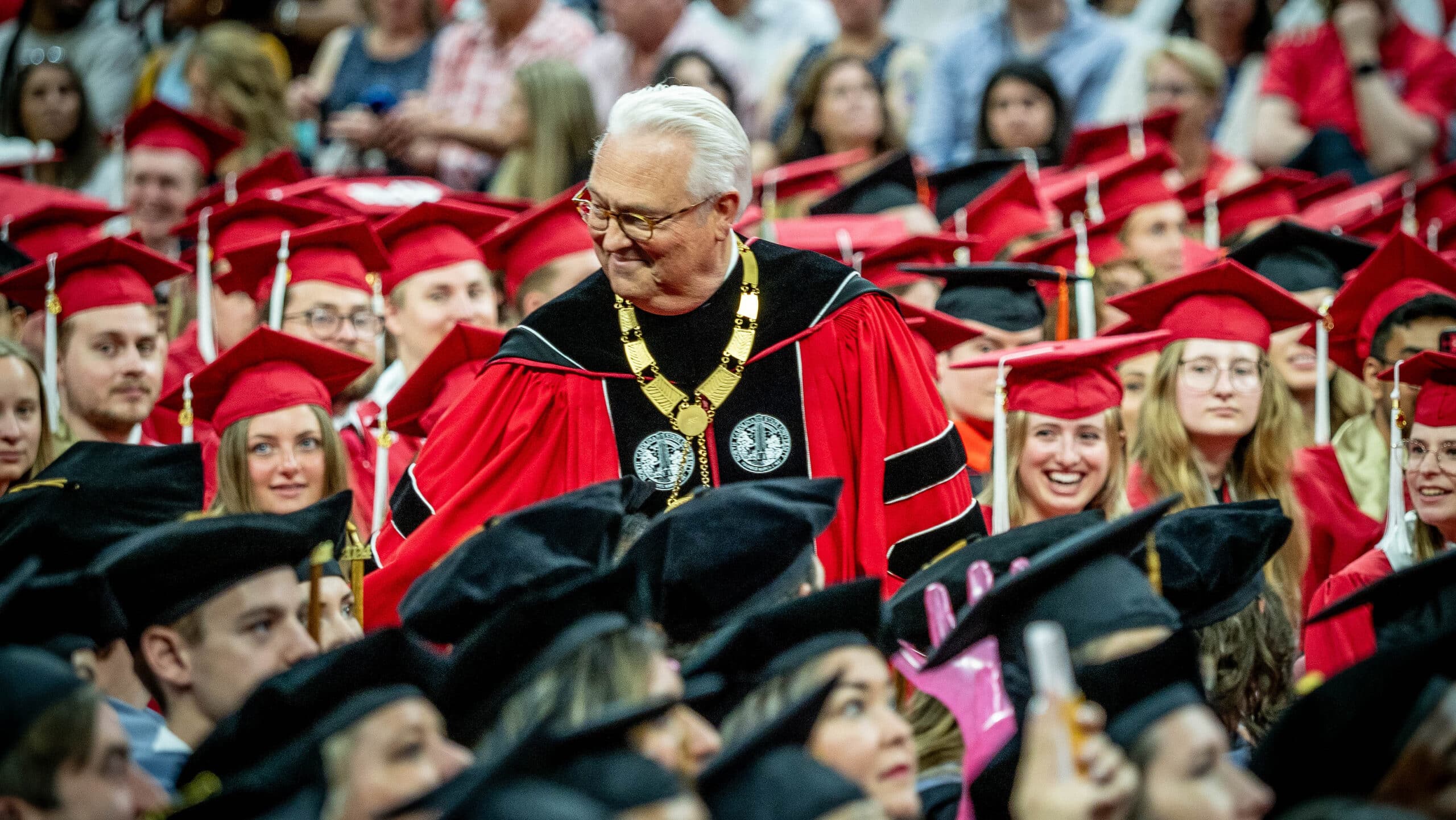No Main Squeeze
Add boa constrictors to the list of animals that can have babies without mating. An NC State study shows a special female boa can squeeze out babies that have no male genetic influence.
This is the first time asexual reproduction, known in the scientific world as parthenogenesis, has been documented in boa constrictors, says Dr. Warren Booth, an NC State postdoctoral researcher in entomology and lead author of the journal article in Biology Letters.

Immaculate Constriction
Two large litters of female babies produced by the “super mom” boa constrictor carry only one of two female boa chromosomes, a phenomenon previously believed to be impossible. All the female babies also share their mother’s rare recessive color mutation.
Adding to the oddity is the fact that male snakes were present and courted the female before she gave birth. And the super-mom had previously had babies the “old-fashioned way” by mating with a male.
Booth doubts that the rare births were caused by environmental changes. He says that while environmental stresses have been associated with asexual reproduction in some fish and other animals, no changes occurred in the mother boa’s environment or routine.
It’s possible this snake is a freak of nature, but Booth says that asexual reproduction in snakes could be more common than people think.
“Reproducing both ways could be an evolutionary ‘get-out-of-jail-free card’ for snakes,” Booth says. “If suitable males are absent, why waste those expensive eggs when you have the potential to put out some half-clones of yourself? Then, when a suitable mate is available, revert to sexual reproduction.”
A reptile keeper and snake breeder, Booth now owns one of the young females from the study. When the all-female snake babies reach sexual maturity in a few years, Booth will be interested to see if they mate with a male, produce babies without a mate, or—like their mother—do both.
- Categories:


